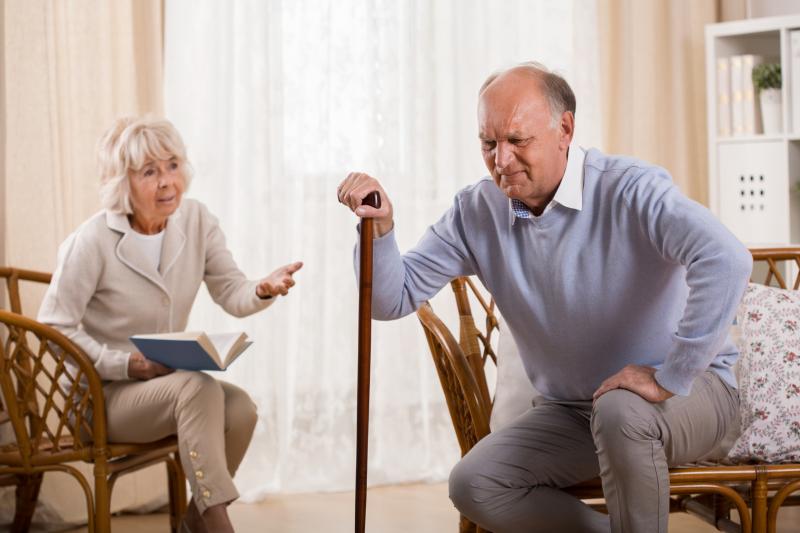
Clinical osteoarthritis (OA) appears to intensify social isolation among elderly adults, a recent study has found.
Researchers conducted a prospective observational study on 1,697 elderly adults (mean age, 73.7±5.3 years; 49.6 percent female) enrolled in the European Project on Osteoarthritis. The Lubben Social Network Scale and the Maastricht Social Participation Profile were used to evaluate social isolation.
Clinical OA was present in 29.6 percent of the participants: 8.4 percent had OA at the hand, 13.6 percent at the hip and/or knee, and 7.6 percent at both hand and hip and/or knee. Nineteen percent (n=382) were deemed to be socially isolated at baseline. Of the remaining 1,585 who were not socially isolated, 13 percent (n=222) developed incident isolation over 12–18 months of follow-up.
Logistic regression analysis adjusted for potential confounders found that clinical OA, either of the hip and/or knee alone or with hand manifestations, is a significant predictor of incident social isolation (odds ratio [OR], 1.47, 95 percent confidence interval [CI], 1.03–2.09; p=0.032). No OA or OA of the hand alone was used as a reference.
Cognitive impairment (OR, 1.90, 95 percent CI, 1.09–3.29; p=0.022) and depression in women (OR, 2.78, 95 percent CI, 1.50–5.15; p=0.001) also emerged as significant risk factors for social isolation. Longer walking time, classified into quartiles, exerted progressively stronger effects (Q2 vs Q1: OR, 2.11, 95 percent CI, 1.36–3.28; Q3 vs Q1: OR, 2.12, 95 percent CI, 1.35–3.33; p=0.001; Q4 vs Q1: OR, 2.06, 95 percent CI, 1.28–3.33; p=0.003).